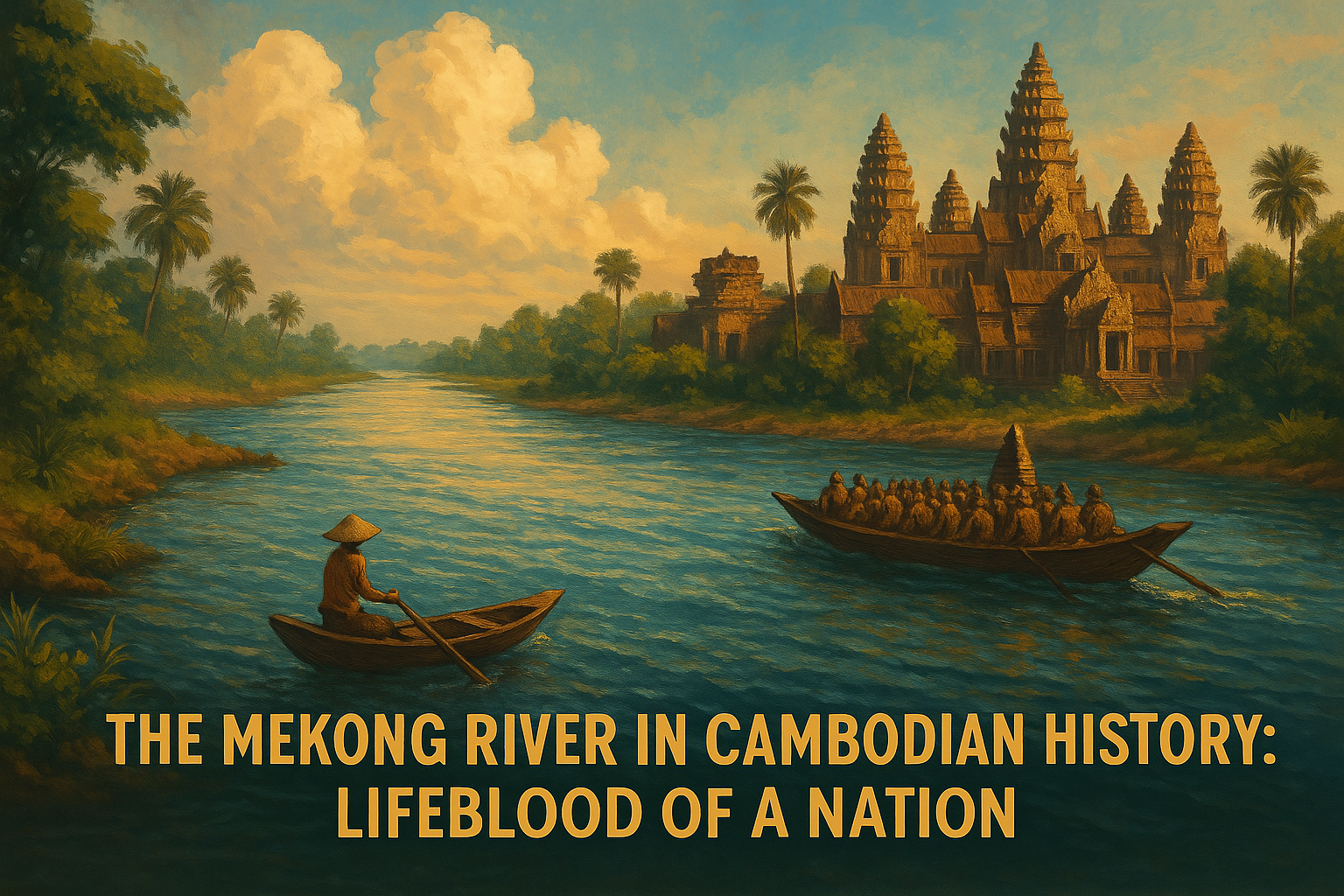The Mekong River, known in Khmer as Tonle Thom (“Great River”), is more than just a waterway flowing through Cambodia—it is the lifeblood of the nation, deeply intertwined with the land, the people, and the soul of Khmer culture. For thousands of years, the Mekong has nourished civilizations, sustained economies, inspired spiritual beliefs, and shaped the identity of Cambodia.
In this article, we explore the many dimensions of the Mekong River’s historical, cultural, and ecological significance—from ancient times to the present.
The Mekong River as a Lifeline for Ancient Khmer Civilization
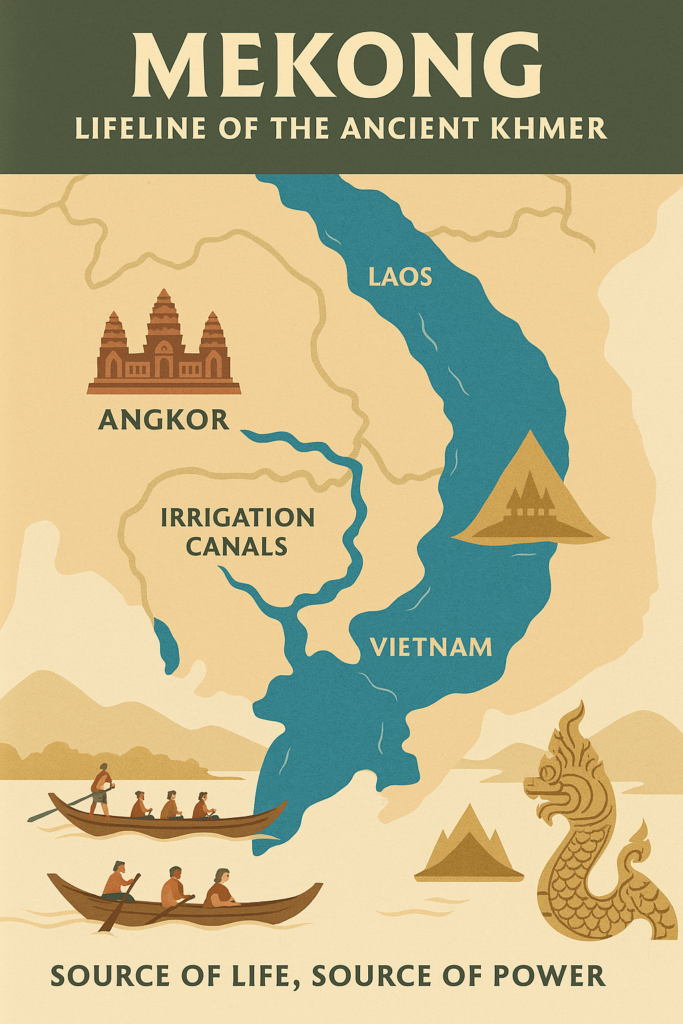
Long before the rise of Angkor, the early Khmer people settled along the Mekong’s fertile banks. The river provided essential resources—fresh water, fertile soil, fish, and transportation—and allowed early settlements to thrive.
During the height of the Khmer Empire (9th–15th centuries), the Mekong supported vast irrigation networks that sustained rice agriculture on an unprecedented scale. It connected the capital at Angkor with other major centers and served as a spiritual artery linking the people to the natural world.
The Mekong wasn’t just a resource—it was a sacred force. Inscriptions and temple reliefs depict the river’s life-giving role in Khmer cosmology. It was revered not only for its power to provide but also for its symbolic importance in maintaining harmony between earth and heaven.
The Importance of Fishing and Agriculture Along the Mekong
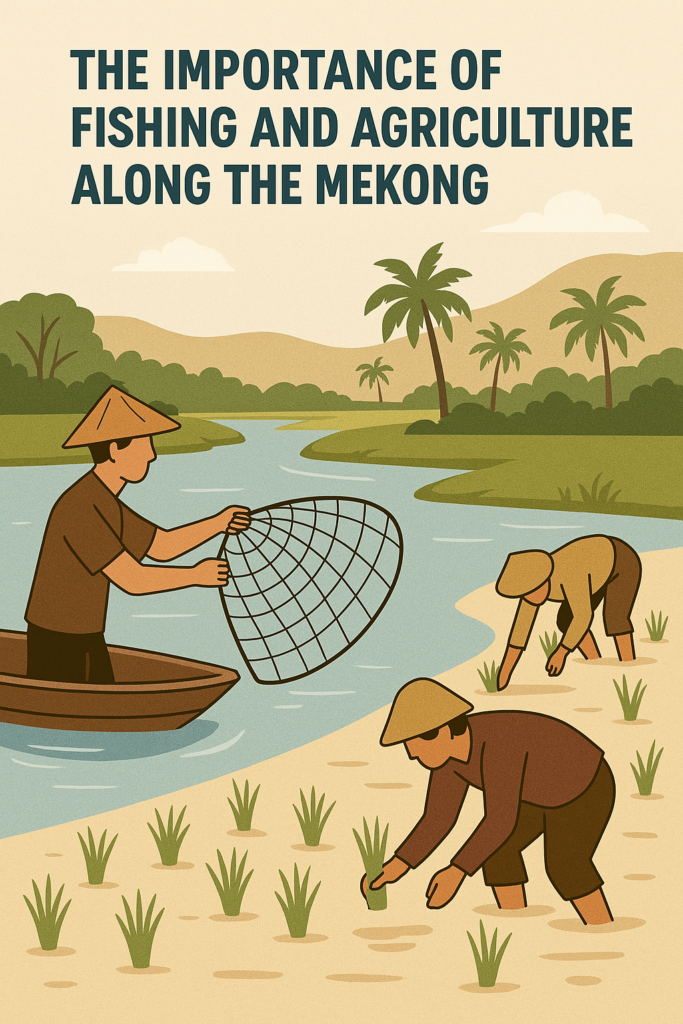
To this day, fishing and farming along the Mekong River are the cornerstones of Cambodian rural life. The river feeds into Tonle Sap Lake, forming one of the world’s richest inland fisheries and a complex floodplain ecosystem that sustains millions.
Key contributions of the Mekong to Khmer livelihood:
- Seasonal floods enrich the soil, enabling productive rice farming
- Over 400 species of freshwater fish support food security and commerce
- Floating villages and stilt houses are built in harmony with seasonal cycles
In many rural communities, the rhythm of life follows the river’s rise and fall. Fishing boats set out at dawn, and rice paddies shimmer in the afternoon sun—both nourished by the pulse of the Mekong.
The River’s Role in Trade and Transportation
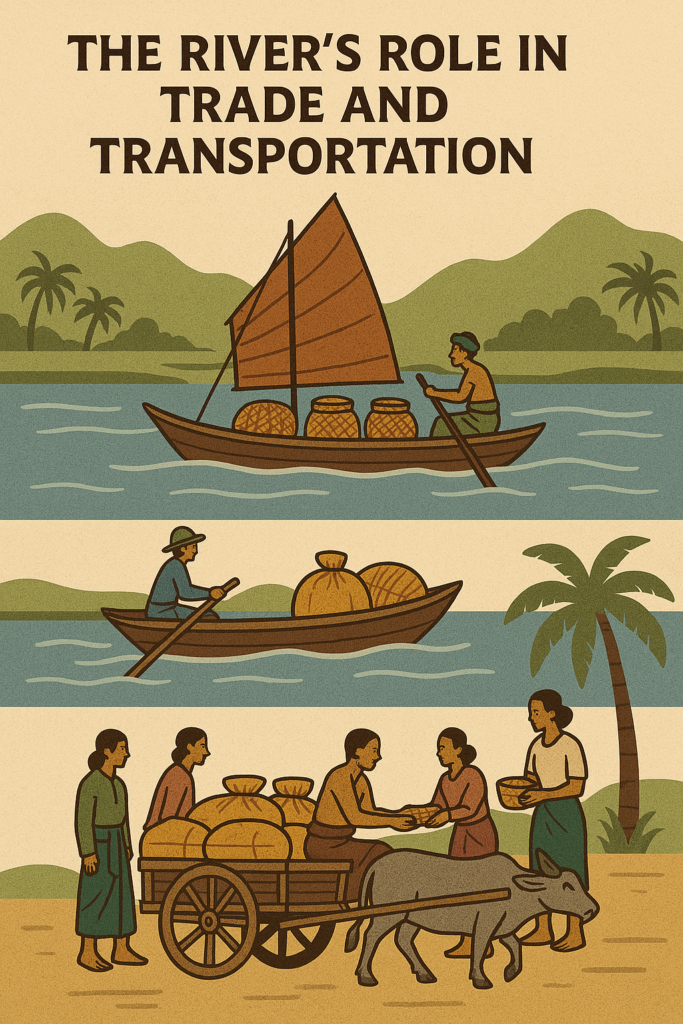
The Mekong has long served as a natural highway through Southeast Asia. From ancient times to the colonial era and into the modern day, the river has connected Cambodia with neighboring Laos, Vietnam, and Thailand.
Historically, the Mekong enabled:
- Regional trade in rice, pottery, textiles, spices, and timber
- The movement of royal expeditions, pilgrims, and monks
- Integration of Cambodia into larger Indochinese trade networks
During the French colonial period, the Mekong was vital to economic extraction, as colonial officials used it to transport goods and materials between Cambodia and the wider French Indochina region.
Today, river transport remains crucial for moving people and goods—especially in areas with limited road infrastructure.
The Impact of Modern Dam Projects on Cambodian Communities
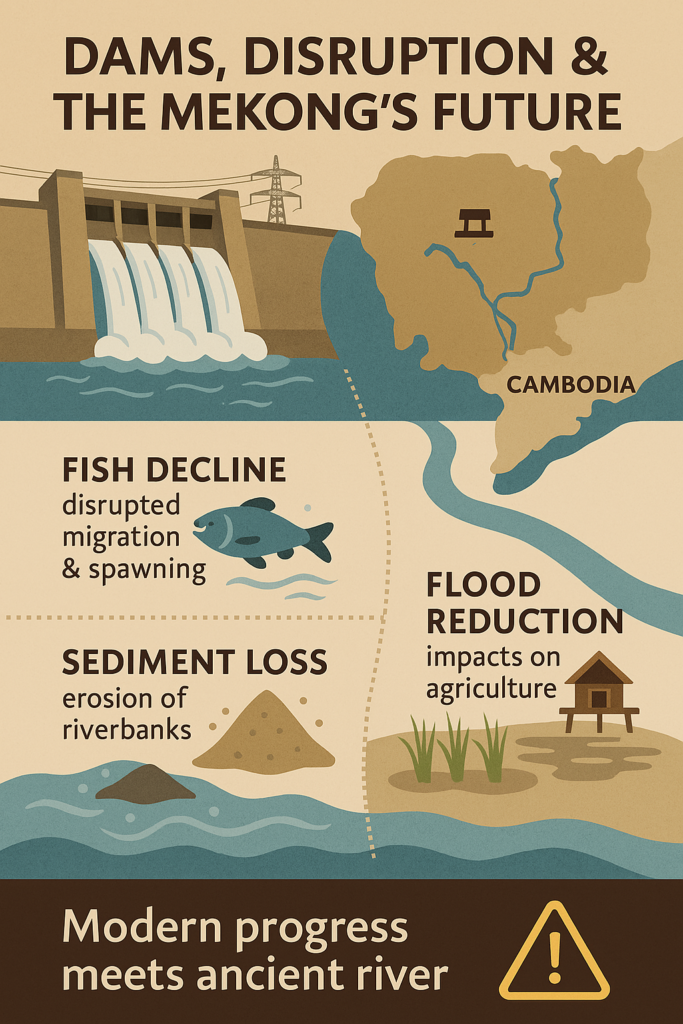
In recent decades, the Mekong has become a site of geopolitical tension due to the construction of large-scale hydropower dams, especially upstream in China and Laos.
While these dams aim to provide electricity and boost economies, they have raised serious concerns in Cambodia:
- Reduced water flow disrupts fish migration and spawning
- Declining fish stocks threaten food security for millions
- Lower water levels affect rice cultivation and wetland ecosystems
- Sediment loss leads to riverbank erosion and biodiversity decline
Communities that once thrived on the river’s seasonal rhythm now face uncertainty and hardship. NGOs, researchers, and local leaders are increasingly advocating for sustainable Mekong governance to protect the future of Cambodia’s most vital waterway.
Festivals and Religious Beliefs Connected to the Mekong
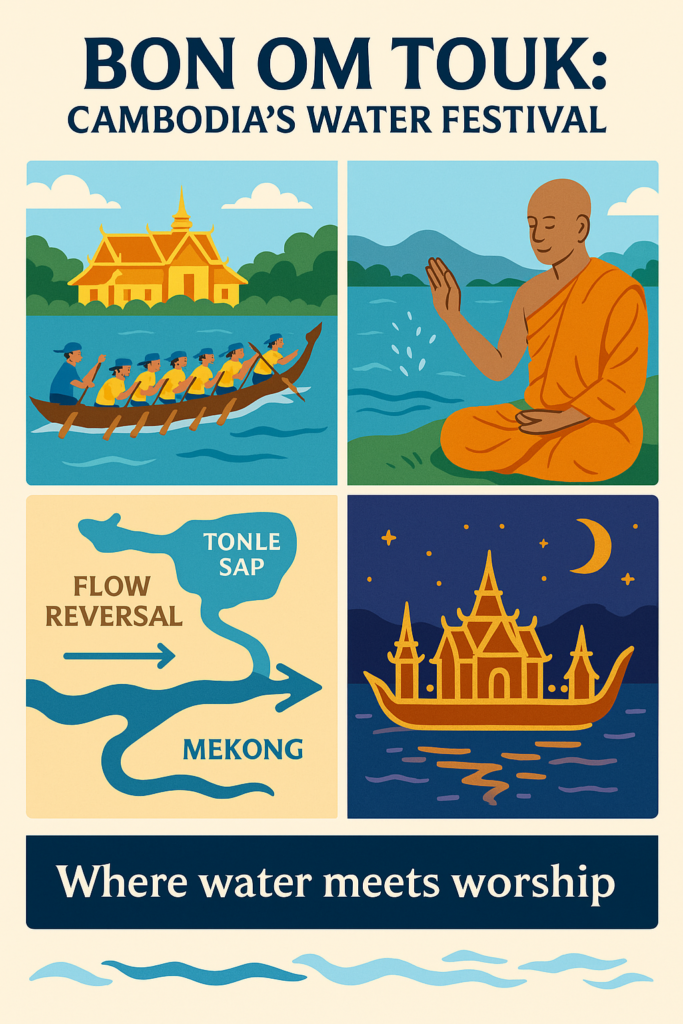
The Mekong River is deeply woven into Cambodia’s spiritual and ceremonial life. One of the most celebrated events is the Bon Om Touk (Water Festival), held each year in November when the Tonle Sap River reverses its flow—a natural miracle caused by the Mekong’s seasonal rise.
Bon Om Touk features:
- Boat races with colorful dragon boats
- River blessings and candlelit ceremonies
- Celebrations in Phnom Penh and across riverfront provinces
Other rituals involve offering prayers to the water spirits, or neak ta, to ensure good harvests and protection from floods. Monks often conduct blessings along riverbanks, reflecting the river’s sacred dimension in Khmer Buddhism.
Stories and Myths About the Mekong River in Cambodian Folklore
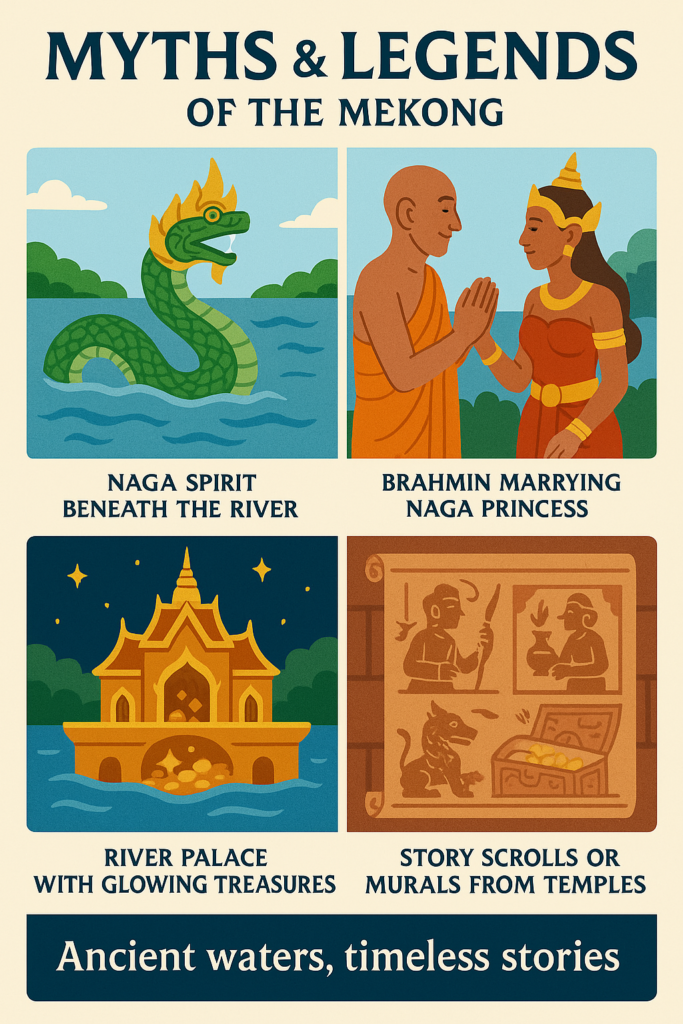
Cambodian folklore is rich with tales of naga (serpent spirits), guardian deities believed to dwell in the Mekong. These mythical beings are seen as protectors of water and fertility.
Common mythic themes include:
- The naga princess who married an Indian Brahmin symbolizes the blending of cultures
- Legends of hidden underwater palaces along the riverbed
- Stories of river dragons that control tides, floods, and storms
These tales are passed down through generations in oral storytelling, temple carvings, and festival performances—connecting Cambodians to the mystical power of the Mekong.
Conclusion: A River That Shaped a Civilization
From the ancient days of Angkor to the bustling floating markets of today, the Mekong River has shaped the destiny of Cambodia. It is a provider, a protector, and at times, a threat—but above all, it is a living symbol of Khmer resilience and harmony with nature.
As Cambodia navigates the challenges of modernization and climate change, protecting the Mekong is not just an environmental issue—it is a matter of cultural survival. For as long as the river flows, it will carry the stories, the spirit, and the strength of the Cambodian people.

